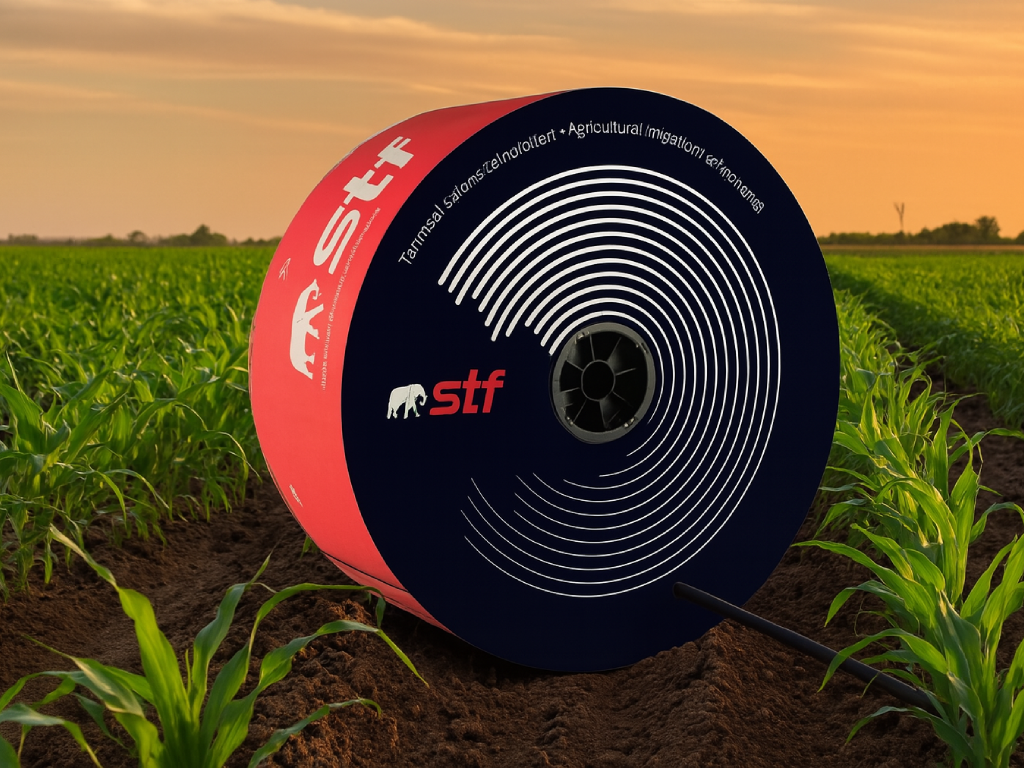
Drip Irrigation Pipe
With increasing water costs, climate change, and the growing need for agricultural efficiency, modern irrigation systems have become essential. One of the most critical components of this transformation is the drip irrigation pipe. When applied correctly, it saves water, improves crop quality, and enhances overall productivity. In this article, we’ll explore what a drip irrigation pipe is, its advantages, and how it compares to sprink systems.
What is a Drip Irrigation Pipe?
A drip irrigation pipe is a specially designed irrigation tube that delivers water directly to the root zone of each plant in controlled, low volumes. Usually made of polyethylene (PE), it can be laid on the soil surface or buried underground. With precisely spaced emitters, it provides accurate and efficient water distribution with minimal evaporation or runoff.
Advantages of Drip Irrigation Pipes
Water Conservation
Compared to traditional irrigation methods, drip systems can reduce water usage by up to 50%.
Improved Plant Health
Water is delivered directly to the roots, minimizing disease risks associated with excessive leaf wetness or standing water.
Weed Reduction
Since only the root zone is irrigated, surrounding soil stays dry, limiting weed growth.
Fertilizer Compatibility
Drip pipes allow fertigation, enabling fertilizers to be delivered through the system efficiently.
Time and Labor Efficiency
When integrated with automation, drip systems require minimal manual intervention.
How Do Drip and Sprink Systems Compare?
Both drip irrigation and sprink systems are designed to improve irrigation efficiency but serve different purposes depending on the crop, field layout, and water source.
| Feature | Drip Irrigation Pipe | Sprink System |
|---|---|---|
| Water Distribution | Directly to root zone | Overhead, rain-like spray |
| Water Efficiency | Very high | Moderate |
| Evaporation Loss | Very low | Moderate to high |
| Best For | Row crops, greenhouses, vineyards | Lawns, orchards, large open fields |
| Weed Growth | Low | Higher risk due to surface wetting |
| Initial Cost | Relatively low | Moderate to high |
Sprink systems are better suited for large open areas, lawns, or trees, while drip irrigation is ideal for precise, row-based farming.
STF Drip Irrigation Pipes: Quality You Can Trust
STF offers high-quality drip irrigation pipes made from UV-resistant polyethylene. These pipes come in various wall thicknesses, diameters, and emitter spacing options to suit different terrains and crops.
Key Features:
- Available in 16 mm, 20 mm, and 25 mm diameters
- Wall thickness options from 0.15 mm to 0.9 mm
- Emitter spacing of 20 cm, 30 cm, or 40 cm
- Precision emitter holes to reduce clogging
- Easy installation and flexibility on the field
Where Are Drip Irrigation Pipes Used?
- Greenhouses
- Vegetable and fruit fields
- Vineyards and orchards
- Row crops like tomatoes, peppers, and cucumbers
- Urban farming and landscaping projects
Conclusion: Smarter Irrigation for Sustainable Agriculture
If you’re aiming for sustainability in agriculture, drip irrigation pipes are an indispensable solution. They ensure optimal water usage while improving crop quality and yield. That said, sprink systems still play a crucial role in broad coverage areas and landscape irrigation.
Depending on your field and crop type, you can use drip, sprink, or a combination of both for best results. At STF, we continue to support farmers with a full range of drip irrigation and sprink solutions designed for today’s agricultural challenges.

